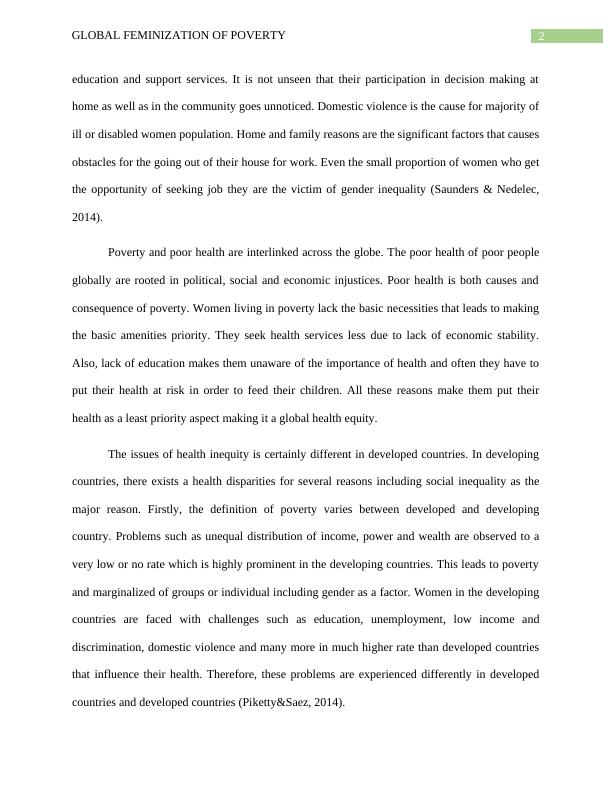Global Feminization of Poverty: Policies and Advocacy Plan
Prepare a briefing note for the Canadian Nurses Association (CNA) Board of Directors that offers background information, analysis and recommendations on a global health issue (Global Feminization of Poverty & Neoliberalism Idea beyond Economic Globalization).
8 Pages1870 Words280 Views
Added on 2023-04-24
About This Document
This article discusses the issue of global feminization of poverty, policies/actions to address this global problem, and a policy/advocacy plan for CNA to achieve the desired policy solutions. It also includes a summary of the content, subject, and document type.
Global Feminization of Poverty: Policies and Advocacy Plan
Prepare a briefing note for the Canadian Nurses Association (CNA) Board of Directors that offers background information, analysis and recommendations on a global health issue (Global Feminization of Poverty & Neoliberalism Idea beyond Economic Globalization).
Added on 2023-04-24
ShareRelated Documents
End of preview
Want to access all the pages? Upload your documents or become a member.
Feminization of poverty in women
|9
|2002
|39
The Social Impact of Inequality on Gender: Mental Health, Education, and Employment
|10
|2584
|363
Critical Analysis of Women and Poverty in Canada
|6
|1550
|316
Project on Poverty Assignment
|8
|2144
|144
Gender Gap in Employment
|12
|3303
|66
Introduction to Health and Social Care pdf
|7
|1886
|341



